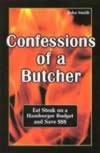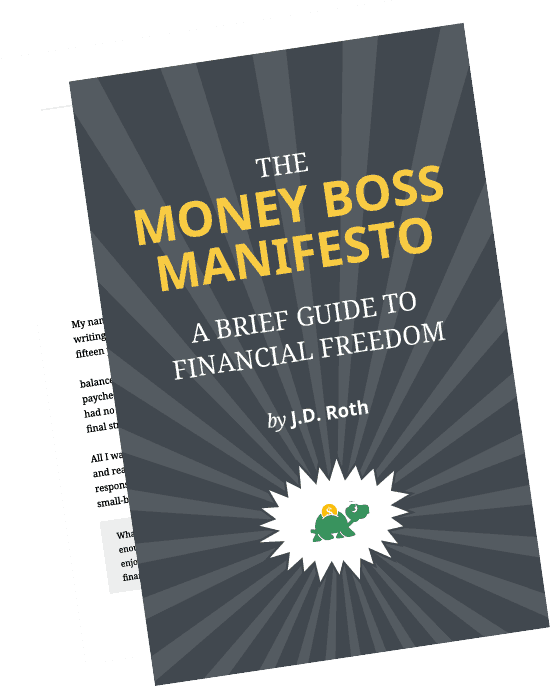Confessions of a Butcher: Eating Steak on a Hamburger Budget
 Every week, I receive a couple of books in the mail from authors and publishers. (This week there were six!) They’re hoping that I’ll find time to review their work at Get Rich Slowly. I do my best, but it’s impossible to read everything.
Every week, I receive a couple of books in the mail from authors and publishers. (This week there were six!) They’re hoping that I’ll find time to review their work at Get Rich Slowly. I do my best, but it’s impossible to read everything.
When John Smith offered to send me his book, Confessions of a Butcher, I wasn’t expecting much. I’ve read a few niche books like this, and they’re usually uninspiring. As a full-fledged carnivore, I’m please to report this one is different. Smith spent more than 30 years in the meat industry, and he’s used his experience to produce a short book packed with information.
Confessions of a Butcher contains:
- 60 pages describing different cuts of meat and offering suggestions for cheaper alternatives.
- A glossary of meat-related terms.
- An appendix containing 30 pages of short articles, such as “What to do with leftover turkey”.
The book has sections on beef (steaks, quality steaks, roasts, ribs, ground beef), pork (chops and steaks, roasts, ribs), lamb, veal, and chicken. Smith lists about 100 cuts of meat (most of which are beef). He briefly describes each cut, and then suggests cheaper (or higher-quality) alternatives.
Smith granted me permission to reprint some examples from the book. Here are his entries for stew meat, ground beef, and lamb.
Beef for stew
Money-saving alternatives: chuck roast, rump roast, cross rib roast, round steak, brisket, flatiron, chuck flat strip.Stew meat is made from the trim that is left over from the day’s cuttings. Even when stew meat is on sale, it may not be as cheap as many other cuts. Boneless chuck roasts and round steaks on sale will be cheaper, sometimes a lot cheaper. Find the cheapest and leanest cut of meat and cut into cubes for stew or ask the butcher for his assistance.
Now having said all that, the best meat for stew, in my humble opinion, comes from the brisket, flatiron, or the chuck flat strip. These three cuts should cost you less than the stew meat in the counter but may not be the best deal you can find. They will however be the best stew meat you can find.
Regular ground beef
Money-saving alternative: boneless chuck roasts.Regular ground beef is 27 to 30 percent fat and usually priced to sell. However, you should be able to find boneless chuck roasts on sale for about the same price. Have the butcher grind some up for you. You may not save much, if any, money, but you will get a lot better product. Just about any cut of beef in the counter, when ground, will definitely make leaner and nicer ground beef than regular hamburger.
Lamb
Money-saving alternative: see below.The best thing you can do to save money on lamb purchases is either watch the ads or shop for lamb in a store that is part of a major supermarket chain but located in a blue-collar neighborhood. Most major supermarkets have a meat counter schematic that is the same throughout the chain. In a blue-collar meat and potatoes kind of neighborhood, lamb is not a regular part of the diet, but the local supermarket still has to carry a lamb lineup. In these types of stores, you may find legs of lamb and the like reduced to sell.
I have worked in several stores just like this and have been eating lamb (and saving lots of money) ever since. Ask the butcher if the store ever reduces lamb and when to look for it. Another alternative is to buy lamb from the farmer and have it processed at a local custom meat plant. Be ware that you will lose more than 50 percent from the processing.
I think this is great information. Kris and I have always been puzzled why our friend AJ produces better stews than we do. It’s likely that she’s just a better cook, but maybe she uses a different cut of meat. Also, I had my first ground sirloin burger last month. I’m not sure I can go back to regular ground beef after that. (Yes, I realize ground sirloin is more expensive.)
Although I found the book interesting, Kris was less enthused. “If you had a recipe and were looking to save money, this would be handy book,” she told me. “But it assumes too much on the part of the reader. It uses a lot of meat-related terms, many of which aren’t in the glossary. Plus, I would have liked more detail on what recipes each bargain cut would be good for.”
“Would you pay $11.95 for this book?” I asked.
“No,” she said. “But I might if it were beefier — with charts and hints and recipes.” (Note: Kris didn’t really say “beefier”. That’s just me being funny.)
I, however, would pay $11.95 for Confessions of a Butcher. We buy a lot of meat, and if the book saved us even a few bucks, it would have paid for itself. I do agree, however, that it’s a bit jargony and could benefit from some diagrams and recipes. (Rumor has it there’s a sequel in the works that will address some of these concerns. I’d rather see a revised edition that lumped everything together.)
I’ll leave you with my favorite piece of advice from John Smith. In the chapter about butcher etiquette, he writes:
To really butter up your butcher, always leave a nice comment on his helpfulness and professionalism as you go through the checkstand…Some homemade cookies once in a while won’t hurt either.
Come to think of it, bloggers like homemade cookies too!
For more on this subject, check out these articles from the archives: Making the most of cheap cuts of beef and How to buy a side of beef. Addendum: I finally found it again! Check out the All About Meat website for free online information about meat from the author of this book.
Become A Money Boss And Join 15,000 Others
Subscribe to the GRS Insider (FREE) and we’ll give you a copy of the Money Boss Manifesto (also FREE)
